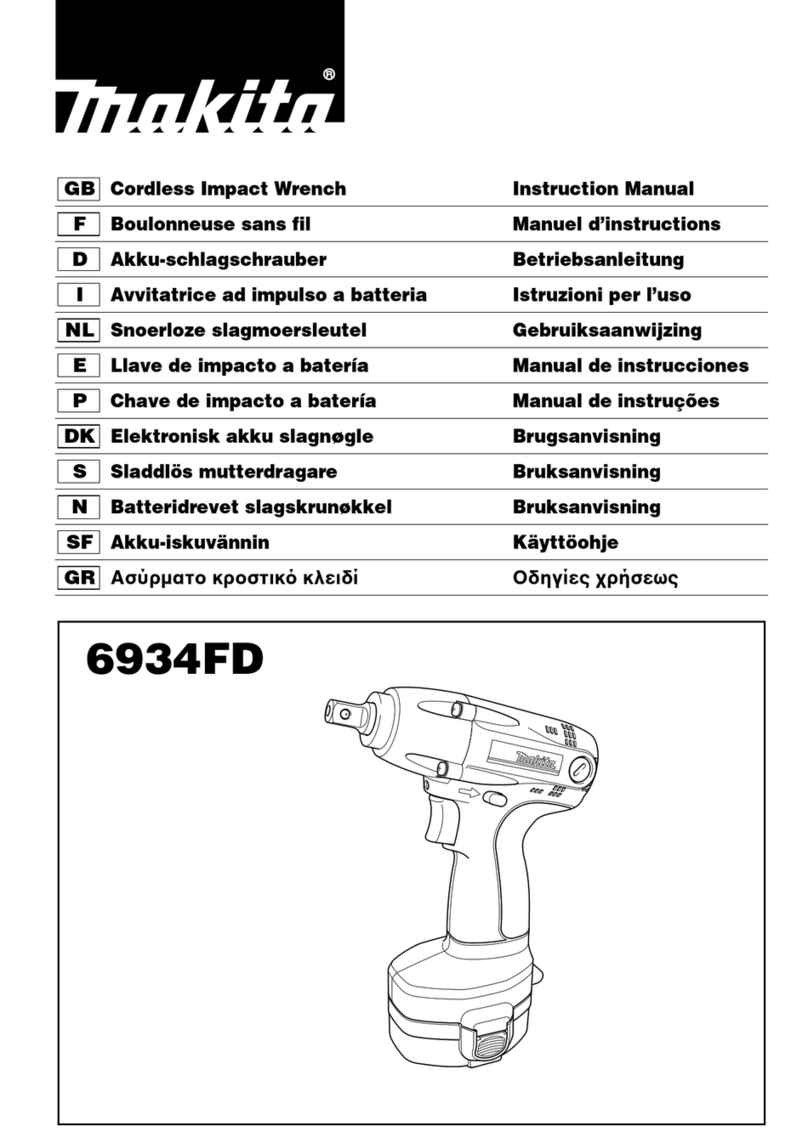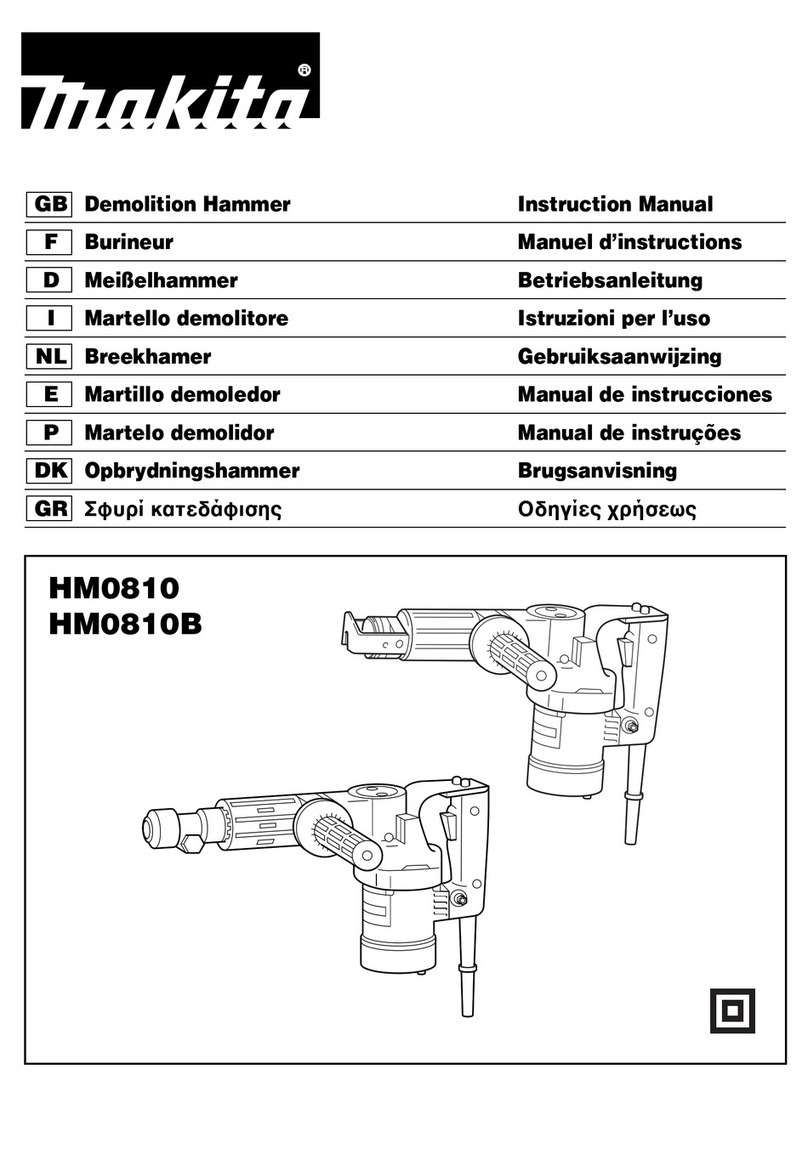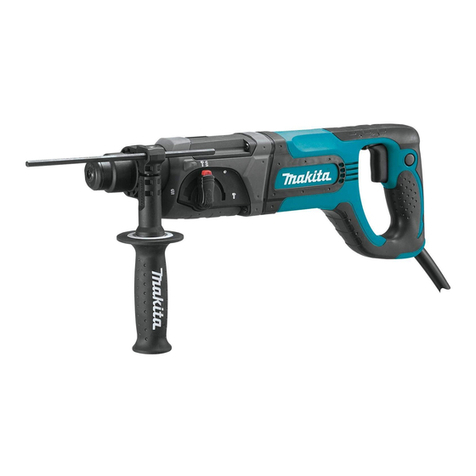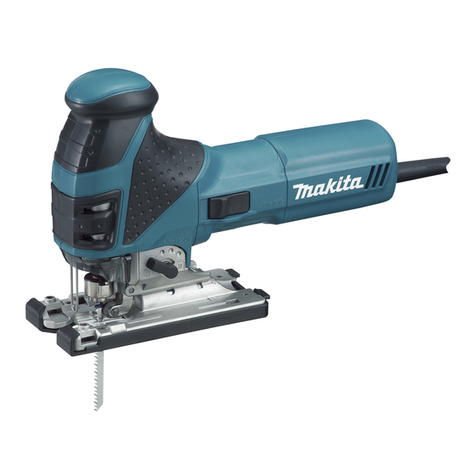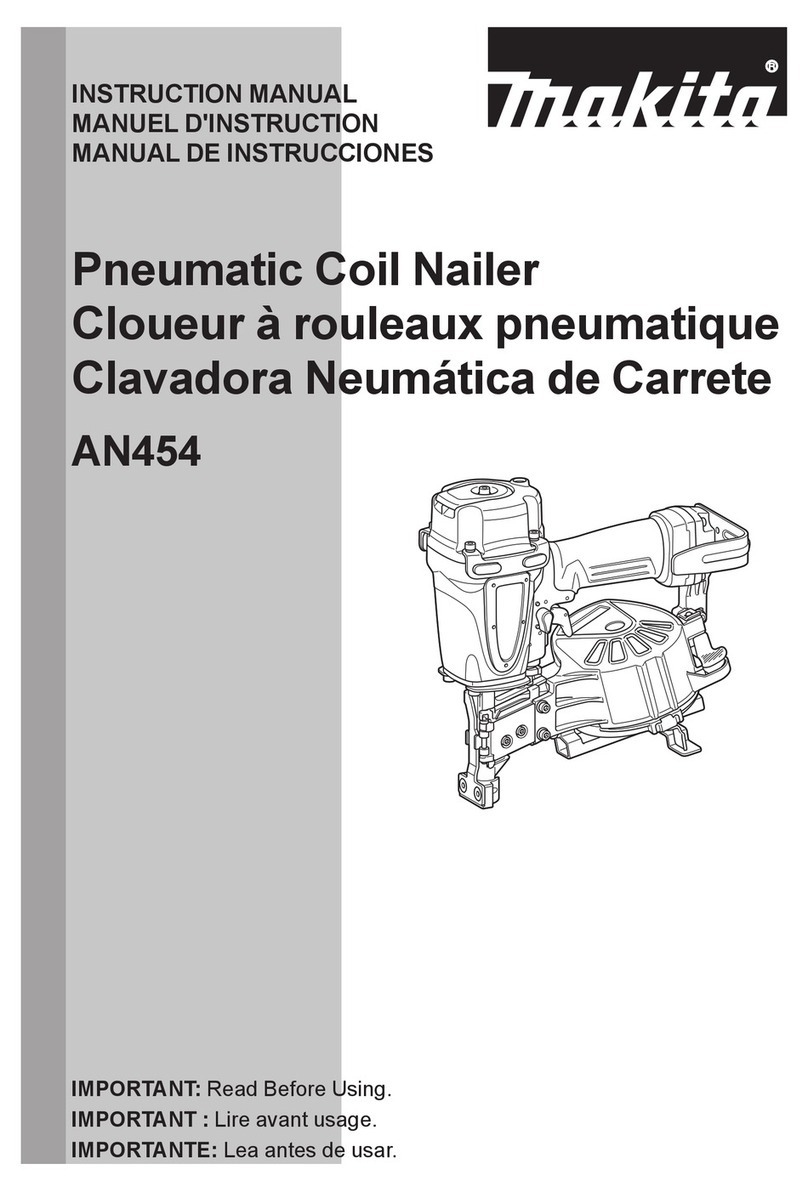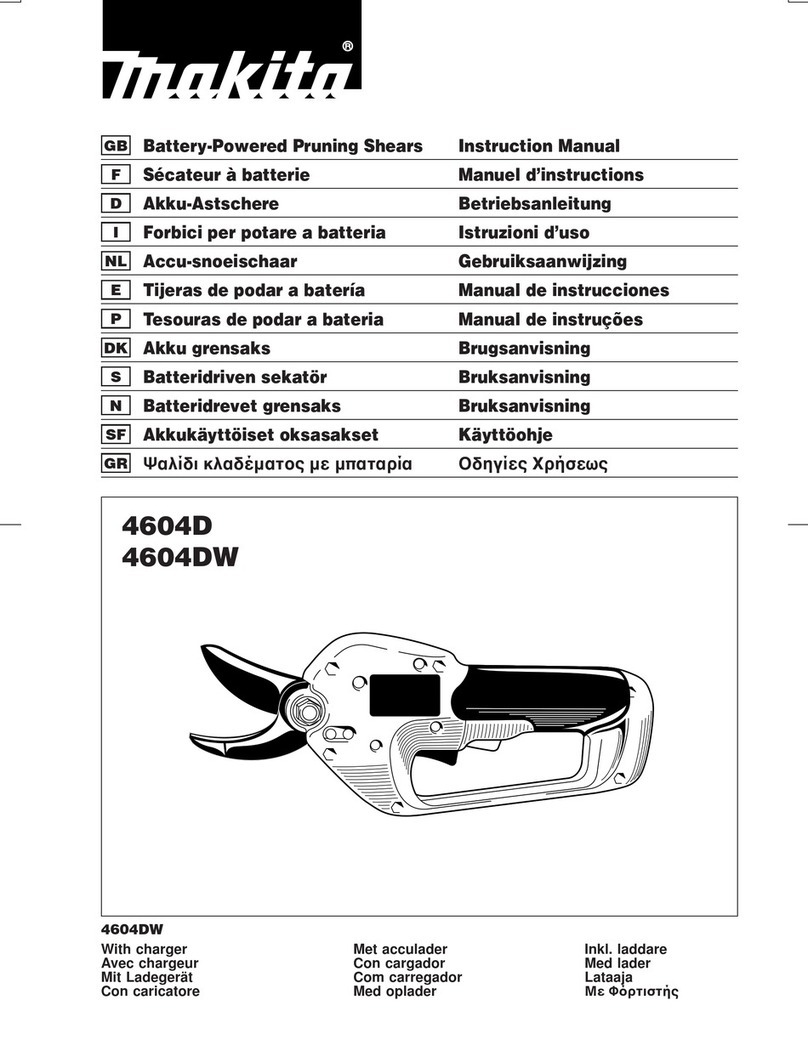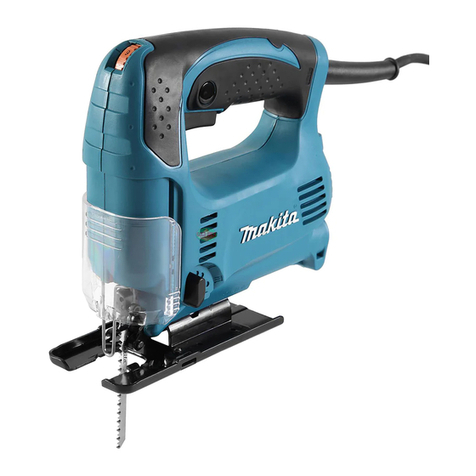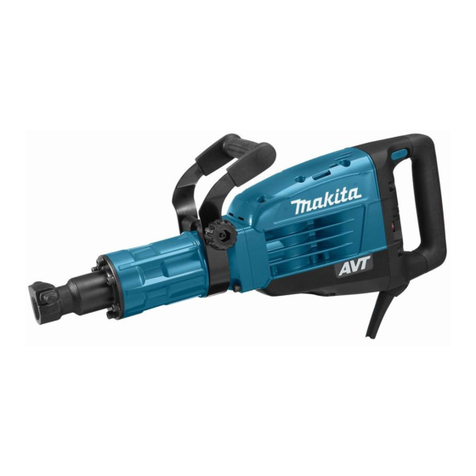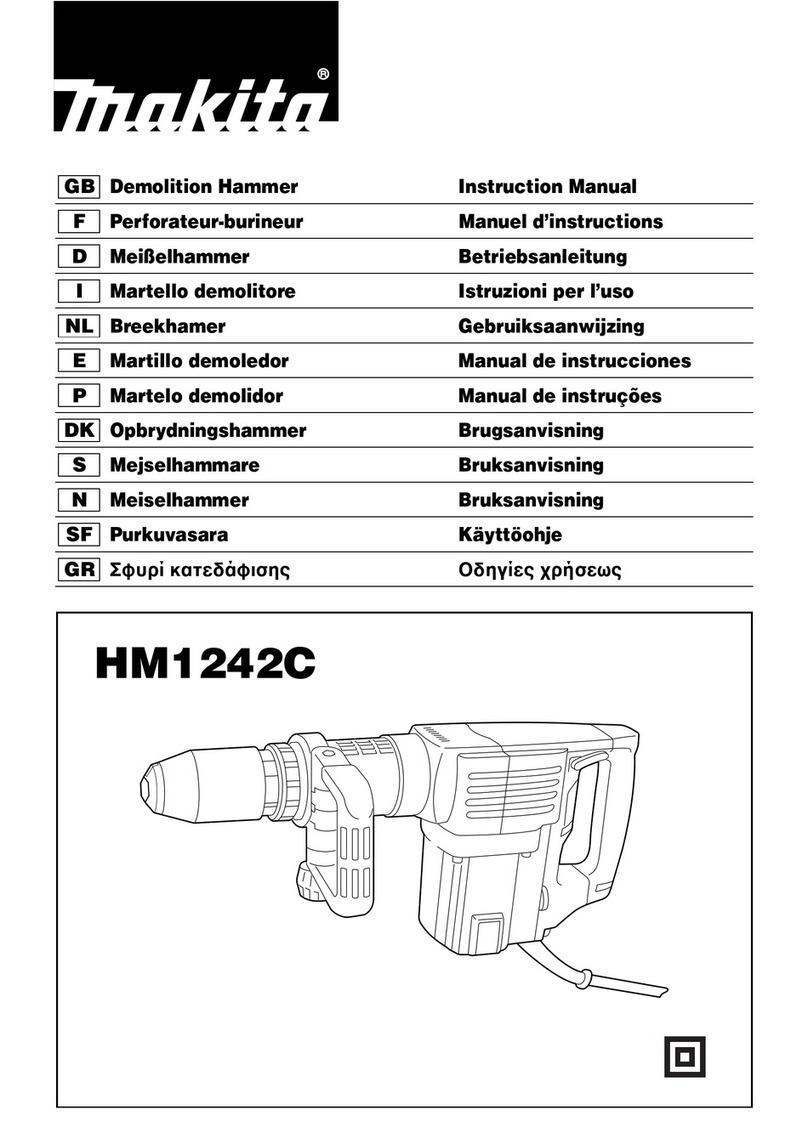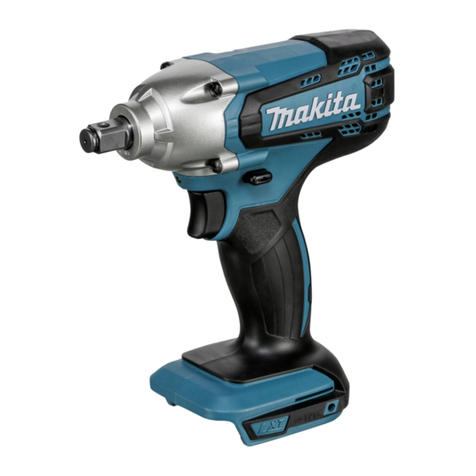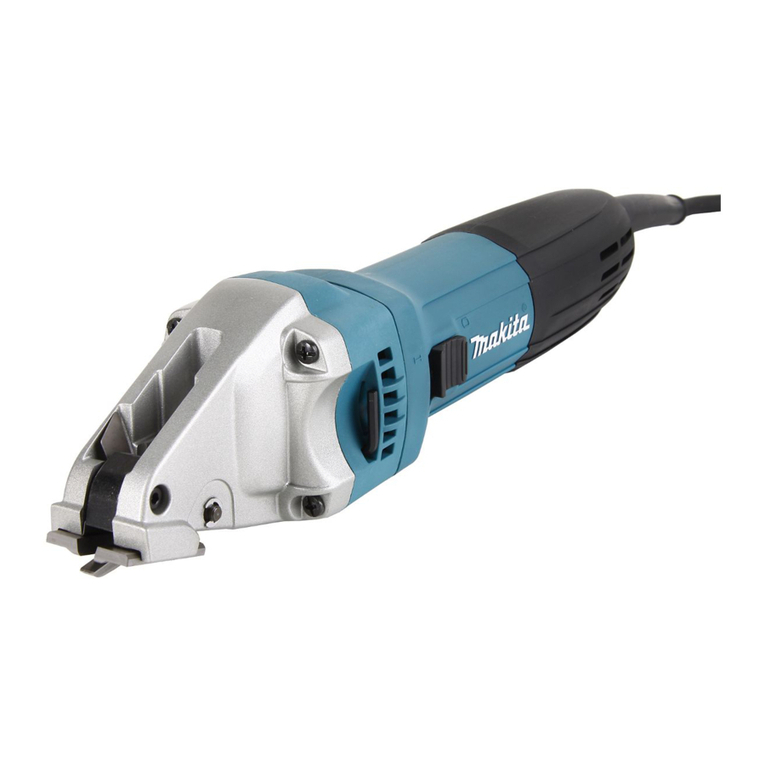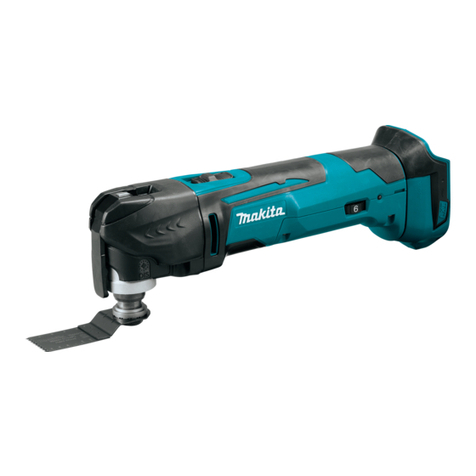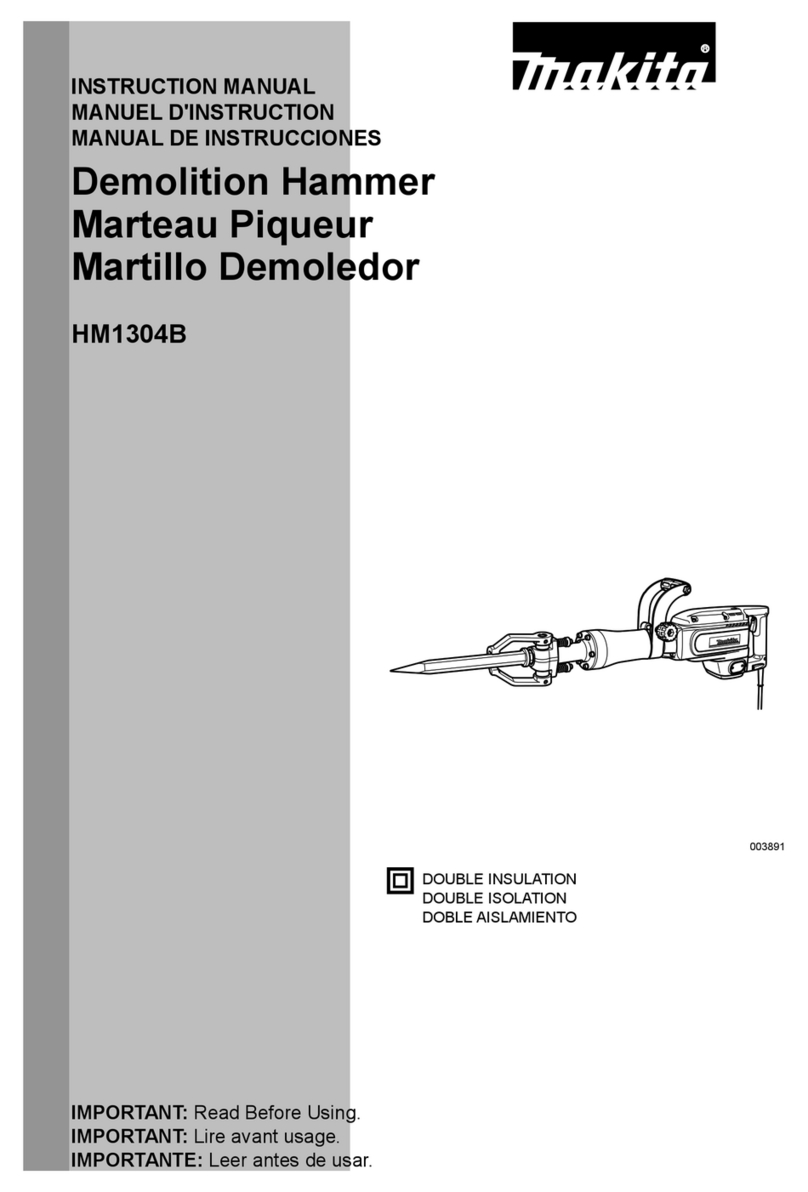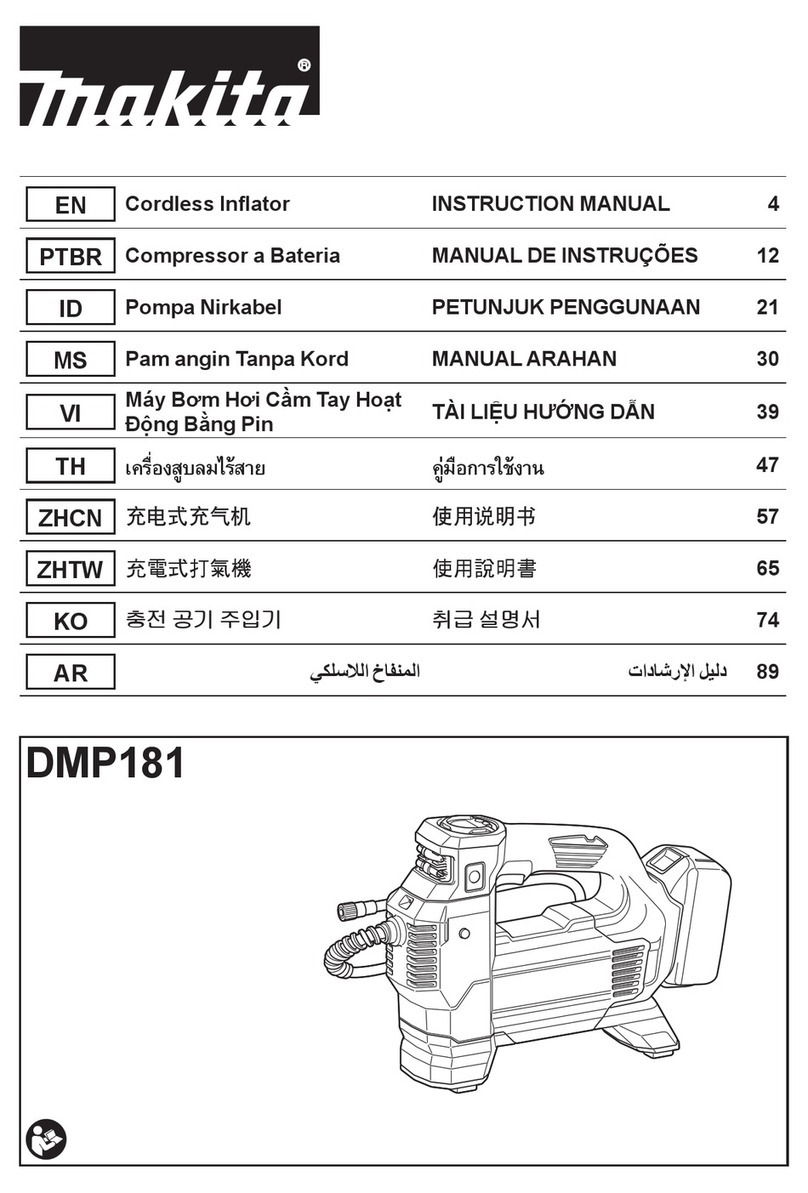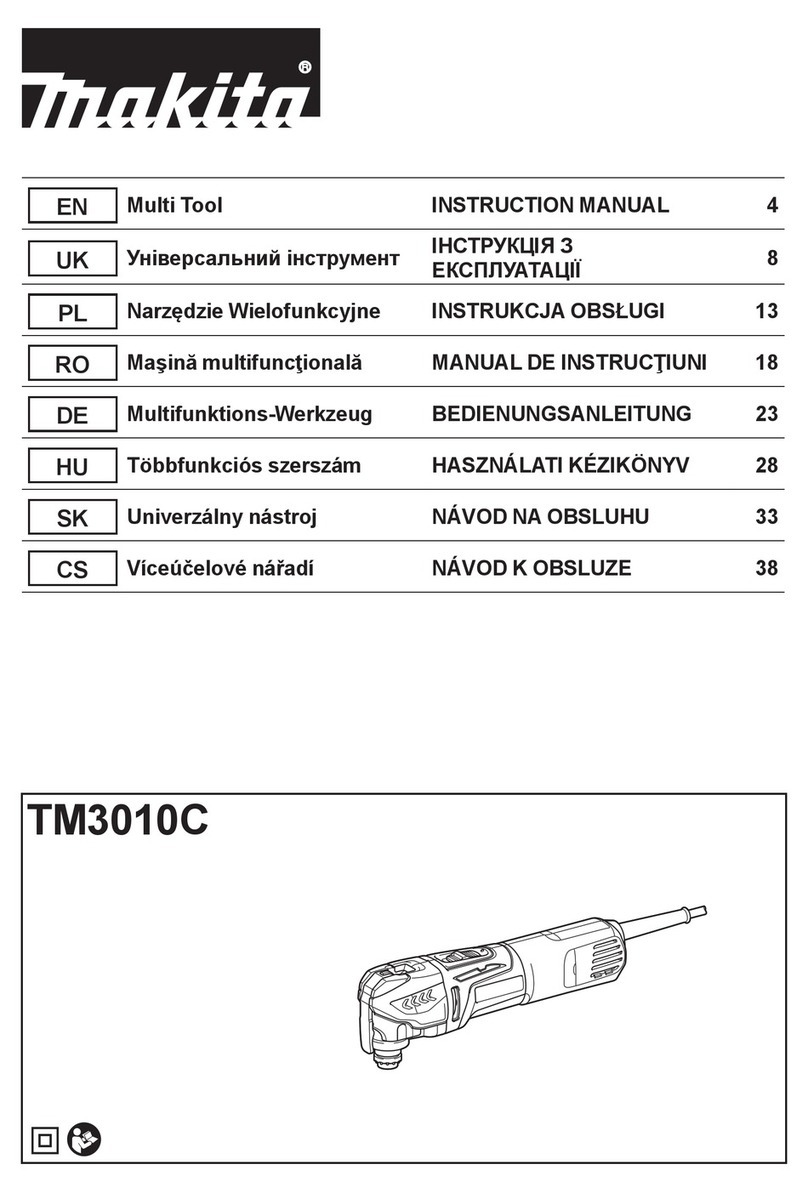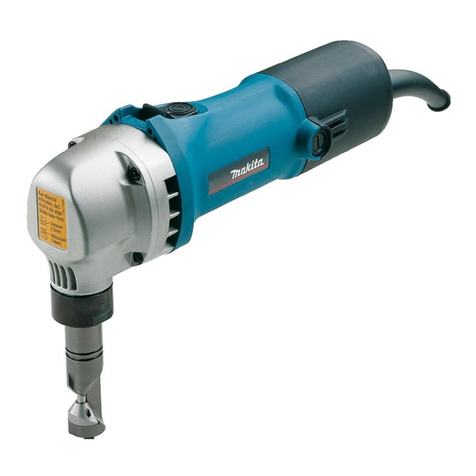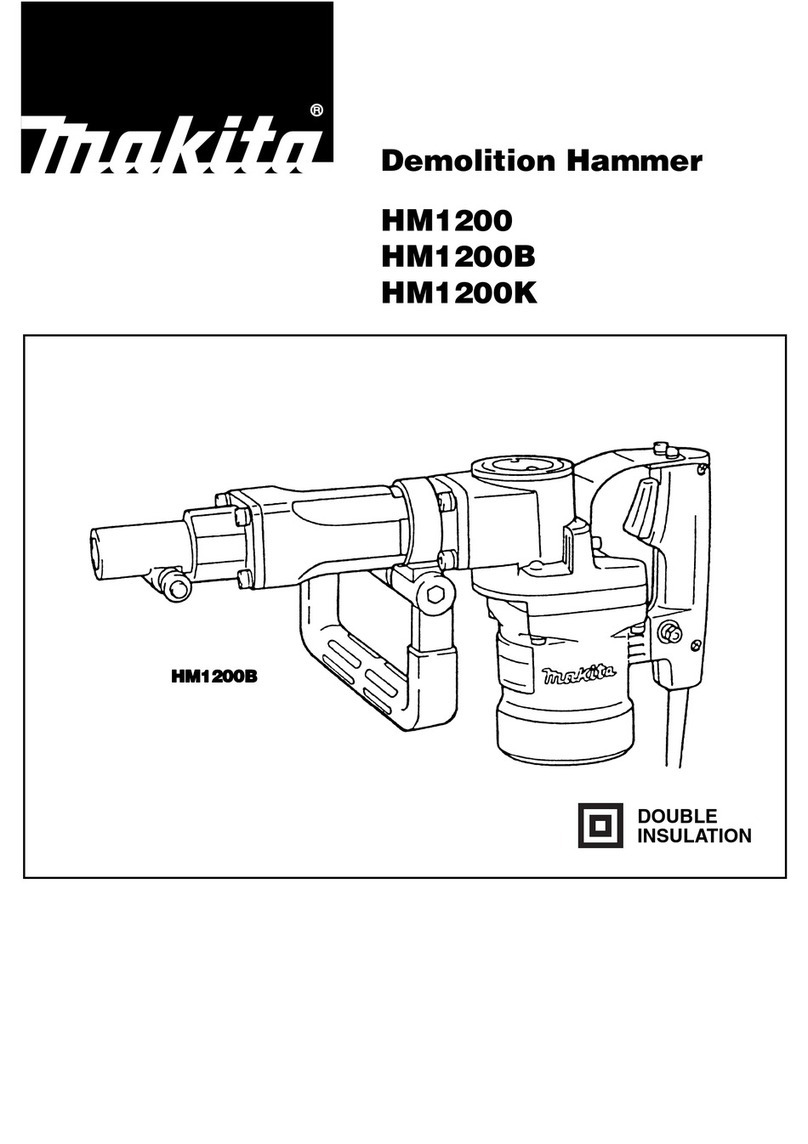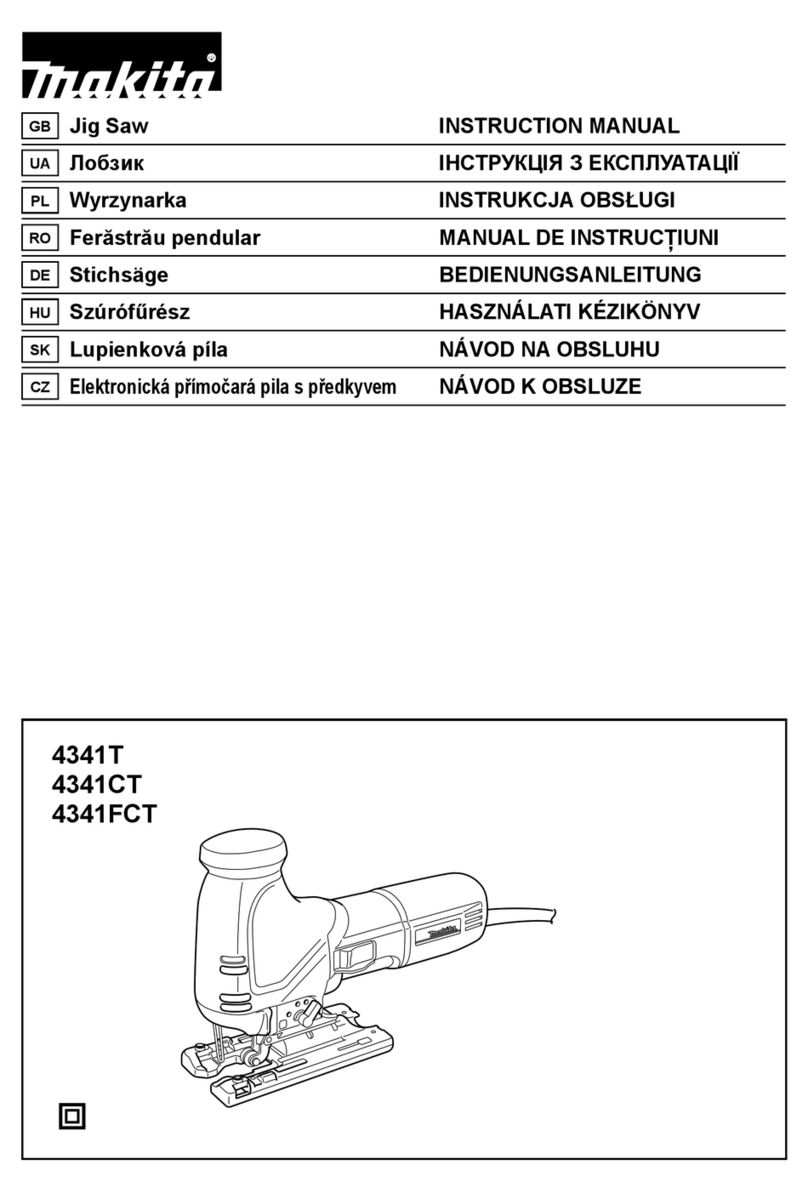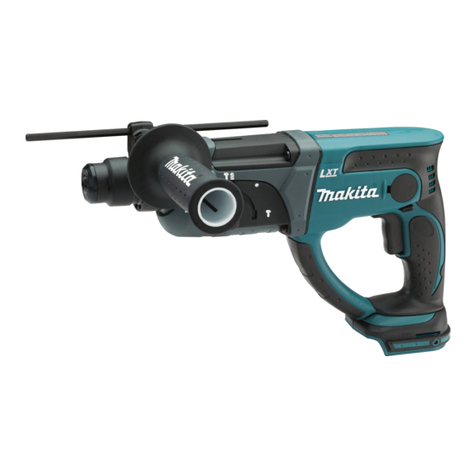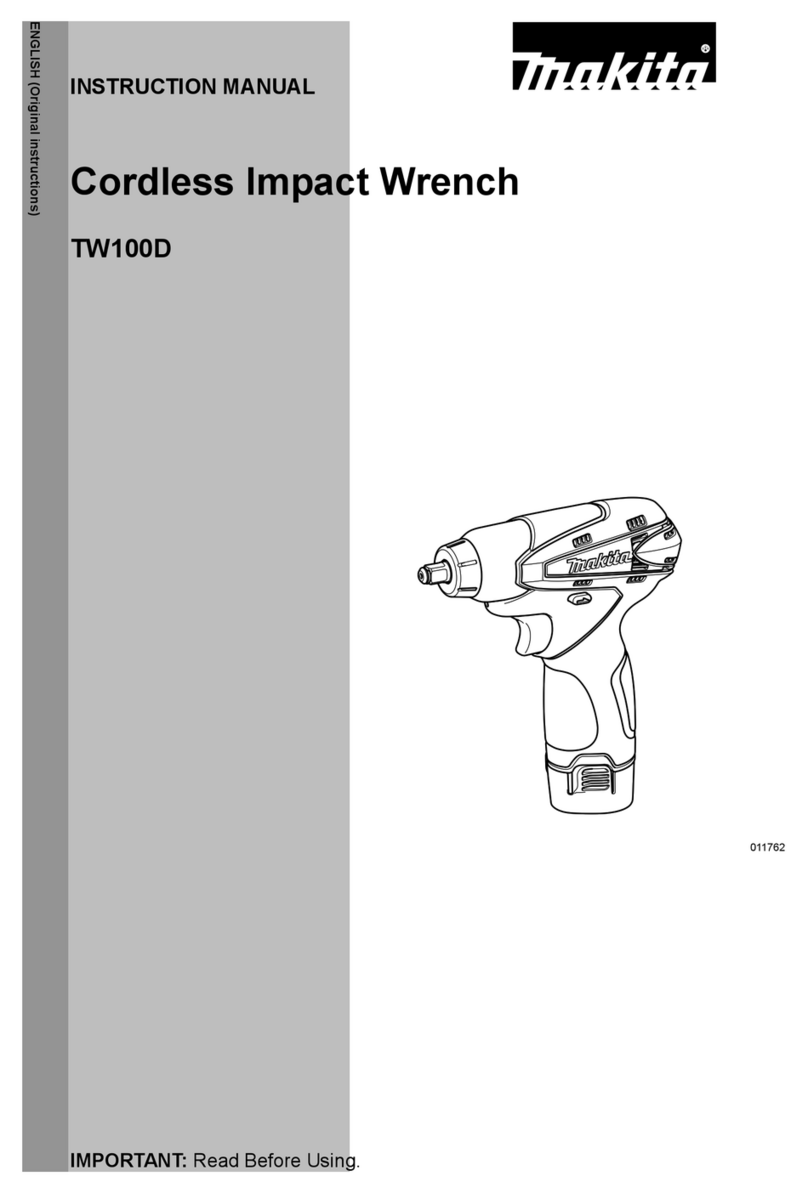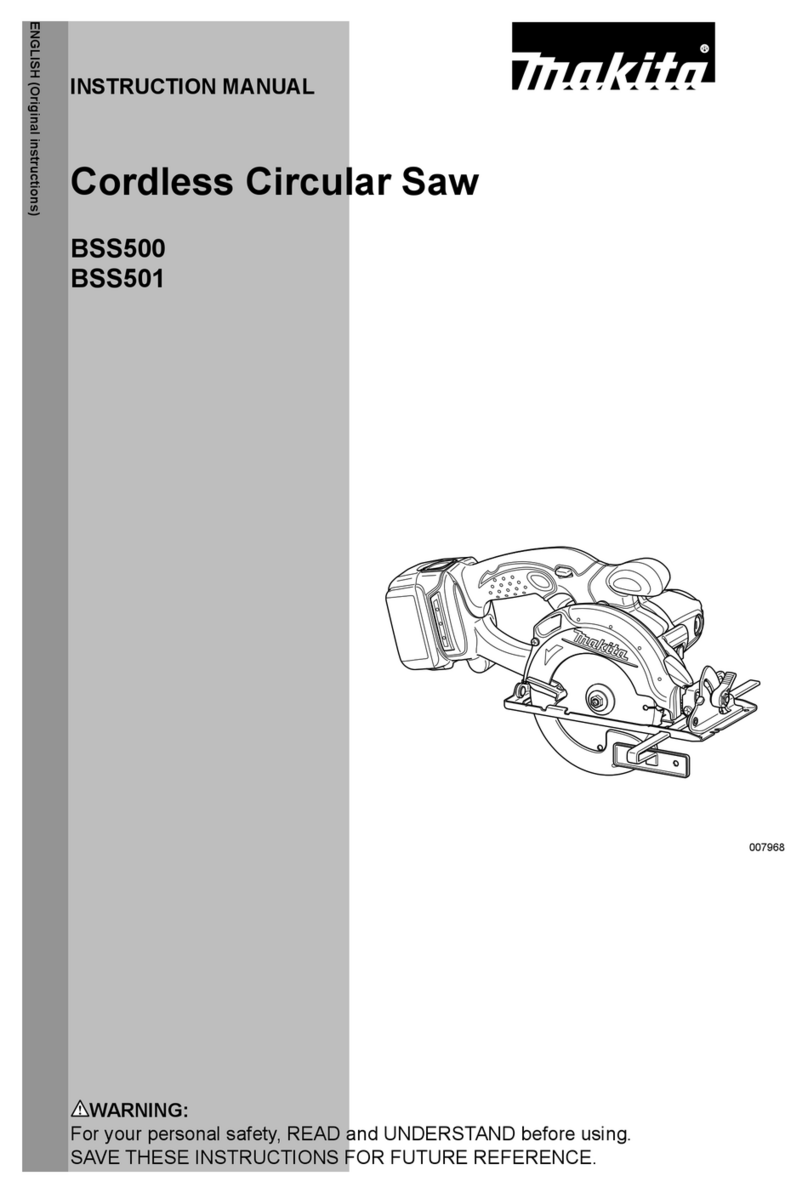10
• Be sure to move the tool forward in a straight line
gently. Forcing or twisting the tool will result in
overheating the motor and dangerous kickback,
possibly causing severe injury.
• If the tool is operated continuously until the battery
cartridge has discharged, allow the tool to rest for
15 minutes before proceeding with a fresh battery.
Fig.13
Hold the tool firmly. The tool is provided with both a front
grip and rear handle. Use both to best grasp the tool. If
both hands are holding saw, they cannot be cut by the
blade. Set the base on the workpiece to be cut without
the blade making any contact. Then turn the tool on and
wait until the blade attains full speed. Now simply move
the tool forward over the workpiece surface, keeping it
flat and advancing smoothly until the sawing is
completed.
To get clean cuts, keep your sawing line straight and your
speed of advance uniform. If the cut fails to properly
follow your intended cut line, do not attempt to turn or
force the tool back to the cut line. Doing so may bind the
blade and lead to dangerous kickback and possible
serious injury. Release switch, wait for blade to stop and
then withdraw tool. Realign tool on new cut line, and start
cut again. Attempt to avoid positioning which exposes
operator to chips and wood dust being ejected from saw.
Use eye protection to help avoid injury.
Rip fence (Guide rule)
Fig.14
The handy rip fence allows you to do extra-accurate
straight cuts. Simply slide the rip fence up snugly against
the side of the workpiece and secure it in position with
the clamp lever on the front of the base. It also makes
repeated cuts of uniform width possible.
MAINTENANCE
CAUTION:
• Always be sure that the tool is switched off and the
battery cartridge is removed before attempting to
perform inspection or maintenance.
• Never use gasoline, benzine, thinner, alcohol or
the like. Discoloration, deformation or cracks may
result.
Adjusting for accuracy of 90°cut (vertical cut)
Fig.15
Fig.16
This adjustment has been made at the factory. But if it is
off, adjust the adjusting screw with a hex wrench while
inspecting 90°the blade with the base using a triangular
rule or square rule, etc.
Adjusting for parallelism
Fig.17
The parallelism between the blade and the base has
been factory adjusted. But if it is off, you can adjust it as
the following procedure.
Make sure all levers and screws are tightened. Slightly
loosen the screw as illustrated. While opening the lower
guard, move the rear of base so that the distance A and
B are equal. After adjusting, tighten the screw. Make a
test cut to get a correct parallelism.
Replacing carbon brushes
Fig.18
Remove and check the carbon brushes regularly.
Replace when they wear down to the limit mark. Keep
the carbon brushes clean and free to slip in the holders.
Both carbon brushes should be replaced at the same
time. Use only identical carbon brushes.
Fig.19
Use a screwdriver to remove the brush holder caps.
Take out the worn carbon brushes, insert the new ones
and secure the brush holder caps.
To maintain product SAFETY and RELIABILITY, repairs,
any other maintenance or adjustment should be
performed by Makita Authorized Service Centers,
always using Makita replacement parts.
OPTIONAL ACCESSORIES
CAUTION:
• These accessories or attachments are
recommended for use with your Makita tool
specified in this manual. The use of any other
accessories or attachments might present a risk of
injury to persons. Only use accessory or
attachment for its stated purpose.
If you need any assistance for more details regarding
these accessories, ask your local Makita Service Center.
• Saw blades
• Rip fence (Guide rule)
• Hex wrench 5
• Dust nozzle
• Guide rail adapter
• Guide rail
• Various type of Makita genuine batteries and
chargers
NOTE:
• Some items in the list may be included in the tool
package as standard accessories. They may differ
from country to country.
